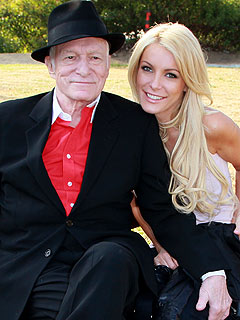AUSTIN, Texas (AP) — Turmoil surrounding an unprecedented $3 billion cancer-fighting effort in Texas worsened Tuesday when its executive director offered his resignation and the state's chief public corruption prosecutor announced an investigation into the beleaguered agency.
No specific criminal allegations are driving the latest probe into the Cancer Prevention and Research Institute of Texas, said Gregg Cox, director of the Travis County district attorney's public integrity unit. But his influential office opened a case only weeks after the embattled agency disclosed that an $11 million grant to a private company bypassed review.
That award is the latest trouble in a tumultuous year for CPRIT, which controls the nation's second-largest pot of cancer research dollars. Amid the mounting problems, the agency announced Tuesday that Executive Director Bill Gimson had submitted his letter of resignation.
"Unfortunately, I have also been placed in a situation where I feel I can no longer be effective," Gimson wrote in a letter dated Monday.
Gimson said the troubles have resulted in "wasted efforts expended in low value activities" at the agency, instead of a focused fight against cancer. Gimson offered to stay on until January, and the agency's board must still approve his request to step down.
His departure would complete a remarkable house-cleaning at CPRIT in a span of just eight months. It began in May, when Dr. Alfred Gilman resigned as chief science officer in protest over a different grant that the Nobel laureate wanted approved by a panel of scientists. He warned it would be "the bomb that destroys CPRIT."
Gilman was followed by Chief Commercialization Officer Jerry Cobbs, whose resignation in November came after an internal audit showed Cobbs included an $11 million proposal in a funding slate without a required outside review of the project's merits. The lucrative grant was given to Dallas-based Peloton Therapeutics, a biomedical startup.
Gimson chalked up Peloton's award to an honest mistake and has said that, to his knowledge, no one associated with CPRIT stood to benefit financially from the company receiving the taxpayer funds. That hasn't satisfied some members of the agency's governing board, who called last week for more assurances that no one personally profited.
Cox said he has been following the agency's problems and his office received a number of concerned phone calls. His department in Austin is charged with prosecuting crimes related to government officials; his most famous cases include winning a conviction against former U.S. House Majority Leader Tom DeLay in 2010 on money laundering charges.
"We have to gather the facts and figure what, if any, crime occurred so that (the investigation) can be focused more," Cox said.
Gimson's resignation letter was dated the same day the Texas attorney general's office also announced its investigation of the agency. Cox said his department would work cooperatively with state investigators, but he made clear the probes would be separate.
Peloton's award marks the second time this year that a lucrative taxpayer-funded grant authorized by CPRIT instigated backlash and raised questions about oversight. The first involved the $20 million grant to M.D. Anderson Cancer Center in Houston that Gilman described as a thin proposal that should have first been scrutinized by an outside panel of scientific peer-reviewers, even though none was required under the agency's rules.
Dozens of the nation's top scientists agreed. They resigned en masse from the agency's peer-review panels along with Gilman. Some accused the agency of "hucksterism" and charting a politically-driven path that was putting commercial product-development above science.
The latest shake-up at CPRIT caught Gilman's successor off-guard. Dr. Margaret Kripke, who was introduced to reporters Tuesday, acknowledged that she wasn't even sure who she would be answering to now that Gimson was stepping down. She said that although she wasn't with the agency when her predecessor announced his resignation, she was aware of the concerns and allegations.
"I don't think people would resign frivolously, so there must be some substance to those concerns," Kripke said.
Kripke also acknowledged the challenge of restocking the peer-review panels after the agency's credibility was so publicly smeared by some of the country's top scientists. She said she took the job because she felt the agency's mission and potential was too important to lose.
Only the National Institutes of Health doles out more cancer research dollars than CPRIT, which has awarded more than $700 million so far.
Gov. Rick Perry told reporters in Houston on Tuesday that he wasn't previously aware of the resignation but said Gimson's decision to step down was his own.
Joining the mounting criticism of CPRIT is the woman credited with brainstorming the idea for the agency in the first place. Cathy Bonner, who served under former Texas Gov. Ann Richards, teamed with cancer survivor Lance Armstrong in selling Texas voters in 2007 on a constitutional amendment to create an unprecedented state-run effort to finance a war on disease.
Now Bonner says politics have sullied an agency that she said was built to fund research, not subsidize private companies.
"There appears to be a cover-up going on," Bonner said.
Peloton has declined comment about its award and has referred questions to CPRIT. The agency has said the company wasn't aware that its application was never scrutinized by an outside panel, as required under agency rules.
___
Follow Paul J. Weber on Twitter: www.twitter.com/pauljweber










